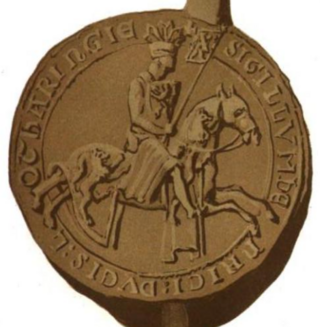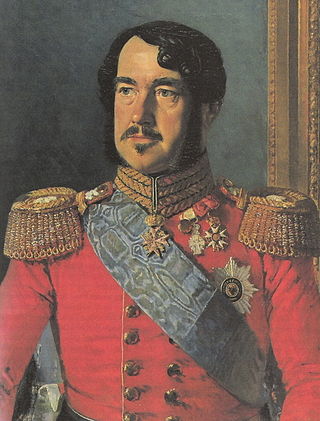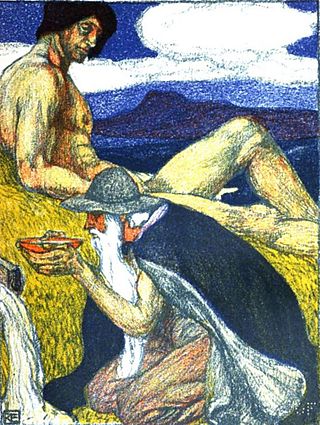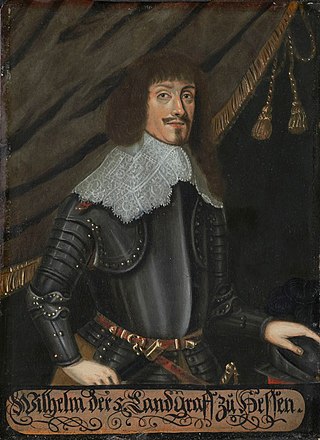"Edda" is an Old Norse term that has been applied by modern scholars to the collective of two Medieval Icelandic literary works: what is now known as the Prose Edda and an older collection of poems now known as the Poetic Edda. The term historically referred only to the Prose Edda, but this usage has fallen out of favour because of confusion with the other work. Both works were written down in Iceland during the 13th century in Icelandic, although they contain material from earlier traditional sources, reaching back into the Viking Age. The books provide the main sources for medieval skaldic tradition in Iceland and for Norse mythology.

The Poetic Edda is the modern name for an untitled collection of Old Norse anonymous narrative poems in alliterative verse. It is distinct from the closely related Prose Edda, although both works are seminal to the study of Old Norse poetry. Several versions of the Poetic Edda exist: especially notable is the medieval Icelandic manuscript Codex Regius, which contains 31 poems.

The Landgraviate of Hesse-Kassel, spelled Hesse-Cassel during its entire existence, also known as the Hessian Palatinate, was a state of the Holy Roman Empire. The state was created in 1567 when the Landgraviate of Hesse was divided upon the death of Philip I, Landgrave of Hesse. His eldest son William IV inherited the northern half of the Landgraviate and the capital of Kassel. The other sons received the Landgraviates of Hesse-Marburg, Hesse-Rheinfels and Hesse-Darmstadt.
Sagas are prose stories and histories, composed in Iceland and to a lesser extent elsewhere in Scandinavia.

Henry Raspe was the Landgrave of Thuringia from 1231 until 1239 and again from 1241 until his death. In 1246, with the support of the Papacy, he was elected King of Germany in opposition to Conrad IV, but his contested reign lasted a mere nine months.

The Icelandic Commonwealth, also known as the Icelandic Free State, was the political unit existing in Iceland between the establishment of the Althing in 930 and the pledge of fealty to the Norwegian king with the Old Covenant in 1262. With the probable exception of hermitic Irish monks known as Papar, Iceland was an uninhabited island until around 874.

Henry II of Brabant was Duke of Brabant and Lothier after the death of his father Henry I in 1235. His mother was Matilda of Boulogne.

Egil Skallagrímsson was a Viking Age war poet, sorcerer, berserker, and farmer. He is known mainly as the anti-hero of Egil's Saga. Egil's Saga historically narrates a period from approximately 850 to 1000 AD and is believed to have been written between 1220 and 1240 AD.
Hermann Pálsson was an Icelandic language scholar and translator, "one of the most distinguished scholars of Icelandic studies of his generation". Often working in collaboration with others such as Magnus Magnusson or Paul Edwards, he translated around 40 works of medieval Icelandic literature.

Great Ireland, also known as White Men's Land (Hvítramannaland), and in Latin similarly as Hibernia Major and Albania, was a land said by various Norsemen to be located near Vinland. In one report, in the Saga of Eric the Red, some skrælingar captured in Markland described the people in what was supposedly White Men's Land, to have been "dressed in white garments, uttered loud cries, bore long poles, and wore fringes." Another report identifies it with the Albani people, with "hair and skin as white as snow."

Prince William of Hesse-Kassel was the first son of Prince Frederick of Hesse-Kassel and Princess Caroline of Nassau-Usingen. He was titular Landgrave of Hesse-Kassel-(Rumpenheim) and for many years heir presumptive to the throne of Hesse-Kassel.

In Norse mythology, Mímisbrunnr is a well associated with the being Mímir, located beneath the world tree Yggdrasil. Mímisbrunnr is attested in the Poetic Edda, compiled in the 13th century from earlier traditional sources, and the Prose Edda, written in the 13th century by Snorri Sturluson. The well is located beneath one of three roots of the world tree Yggdrasil, a root that passes into the Jötunheimr where the primordial plane of Ginnungagap once existed. In addition, the Prose Edda relates that the water of the well contains much wisdom, and that Odin sacrificed one of his eyes to the well in exchange for a drink. In the Prose Edda, Mímisbrunnr is mentioned as one of three wells existing beneath three roots of Yggdrasil, the other two being Hvergelmir, located beneath a root in Niflheim, and Urðarbrunnr.

Prince George Louis of Hessen-Darmstadt was a Field Marshal in the Austrian army. He is known for his career in Habsburg Spain, as Viceroy of Catalonia (1698–1701), head of the Austrian army in the War of the Spanish Succession (1701–1705) and governor of Gibraltar in 1704. He was killed during the Siege of Barcelona the following year. He was known in Spanish as Jorge de Darmstadt and in Catalan as Jordi Darmstadt.

Hesse-Rheinfels was created as a cadet line of Hesse for Philip II, Landgrave of Hesse-Rheinfels (1541–1583), landgrave from 1567 until 1583, and as a cadet line of Hesse-Kassel for Ernest, Landgrave of Hesse-Rheinfels (1623–1693), landgrave from 1627 until 1658.

Caroline of the Palatinate-Zweibrücken was Landgravine of Hesse-Darmstadt by marriage to Louis IX, Landgrave of Hesse-Darmstadt. She was famed as one of the most learned women of her time and known as The Great Landgräfin.

William V, a member of the House of Hesse, was Landgrave of Hesse-Kassel from 1627 to 1637. Having come to rule in unfavorable circumstances and in the midst of the Thirty Years' War, he continued to suffer losses of territory and wealth.

Frederick II of Hesse-Homburg, also known as the Prince of Homburg was Landgrave of Hesse-Homburg. He was also a successful and experienced general for the crowns of both Sweden and of Brandenburg, but is best remembered as the eponymous hero of Heinrich von Kleist's play Der Prinz von Homburg.
The Duchy of Thuringia was an eastern frontier march of the Merovingian kingdom of Austrasia, established about 631 by King Dagobert I after his troops had been defeated by the forces of the Slavic confederation of Samo at the Battle of Wogastisburg. It was recreated in the Carolingian Empire and its dukes were appointed by the king until it was absorbed by the Saxon dukes in 908. From about 1111/12 the territory was ruled by the Landgraves of Thuringia as Princes of the Holy Roman Empire. When Frederick IV, the last independent ruler of Thuringia died in 1440, the territory passed to his nephew, the Saxon elector Frederick II.
Events from the year 1730 in Denmark.